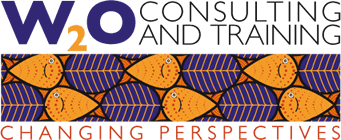How included do women feel? – Measuring inclusiveness
To find out if inclusion can drive gender diversity, McKinsey uses a way to quantify inclusiveness in organisations by translating it into three dimensions:
- Openness – it is safe to express thoughts, ideas, and concerns;
- Equality – there is a perception of fairness, an equal chance for all employees to succeed;
- Belonging – employees share a positive connection to each other and the organisation.
In an international survey, they then find that women generally score their organisation’s success in achieving the three dimensions of inclusiveness lower than their male colleagues do – particularly with respect to openness and equality.
For example, 18% fewer women than men feel comfortable sharing opinions or ideas that challenge the status quo in their organisation. In terms of equality, 23% fewer women than men feel people of different backgrounds have an equal chance of being promoted.
Does inclusion drive gender diversity? – What happens when women feel excluded
McKinsey finds that: ‘As a result of not feeling included, women can feel isolated at the top – a situation that similarly applies to technical roles. Women who are “onlys” have a notably more difficult experience at work: they are more than twice as likely to be asked to prove their competence, over three times more likely to be mistaken for someone more junior, and about twice as likely to be subjected to demeaning or disrespectful remarks.’
In addition, the research finds that the perceived lack of inclusiveness can cause a woman’s career progress to stall and even stagnate. People with a low perception of inclusiveness in their organisation state that they have already given up on career opportunities due to their environment—and this is particularly true for women.
Inclusion can drive gender diversity – What you can do to create a culture of inclusion
So it is clear that a lack of inclusion causes women to stall in their career. That means that you need to work on inclusion to move the numbers on gender. This is especially important if you are keen to have better gender balance at senior levels. McKinsey gives advice on how to work on all 3 dimensions.
Openness
Enhance awareness of how women are excluded by inclusion and unconscious bias training. Training can include: dynamics of privileges that men have, unconscious biases, and in what way to partner with women to create equality. This training only works if it is designed well.
Equality
To drive equality you need to put policies in place. McKinsey mentions the areas of parental leave, flexible working, equal pay and programs to support employees returning to work after a period of parental absence. In the UK I can recommend going beyond equal pay and looking at reducing the gender pay gap. You can find how to reduce the gender pay gap here.
In addition you need to change key leadership codes – leadership competencies – to recognise a wider range of leadership and management styles. McKinsey states that: “Women and men tend to follow different leadership codes in their day-to-day work, with the male approach often more aligned to the organisation’s key leadership characteristics. Whereas men consider entrepreneurship and teamwork to be the most important competencies in their everyday work, women focus on organisational awareness and agility (understanding and navigating complex organizational landscapes and situations)”. I believe this is a key area. You can find out more about women’s different ways of working in this blog on ‘Neuroscience, difference and thinking’.
Belonging
To increase the feeling of belonging of women McKinsey recommends to encourage a sponsorship culture, and ensure both men and women are sponsored. In my experience, it usually works best to introduce a formal sponsorship system. A formal system is more transparent, and that typically works better for women. It also avoids awkward situations; both men and women often mention it is harder to have an informal relationship as that might lead to the wrong conclusions.
To increase belonging McKinsey also recommends that managers consider ‘inclusion nudges’. This can include: sharing the spotlight, curiously seeking out the opinions of others, or speaking up when they see someone withdrawing from a conversation or being interrupted.
To increase belonging McKinsey recommends these practical, everyday behaviours can be encouraged across an organisation:
- Saying thank you at the end of a meeting
- Listening and not interrupting colleagues who are speaking
- Reflecting on personal actions and behaviour – Have I ever sponsored a colleague coming from a minority group? Have I invited anyone from a different demographic to a high profile meeting or speak at an event?
If you are doing that already then you can find more tips on creating an inclusive culture here.
As usual, a really insightful, thorough, and informative piece of research by McKinsey.
Are you looking for support with diversity and inclusion initiatives in your organisation? As well as an open training programme, The Big Fish Academy run tailored training sessions for organisations – based on our open programmes these sessions can be adapted to meet YOUR needs. Find out more about our tailored programmes here, or get in touch with us directly to discuss your requirements.



Author: Inge Woudstra
Would you like to know more or have a question? I am always happy to have a chat to discuss your needs. Why not drop me a line or pick up the phone? Call me at 01372 457 907 or Just contact me to discuss your requirements by e-mail.I can help you recruit, retain and advance women, and typically work with organisations in tech and engineering.
Or just check out my book 'Be Gender Smart - The Key to Career Success for Women'